What Sold at Art Basel in Hong Kong
 Installation view of Ink Studio’s booth at Art Basel in Hong Kong, 2017. Courtesy of Art Basel.
Installation view of Ink Studio’s booth at Art Basel in Hong Kong, 2017. Courtesy of Art Basel.
Art Basel in Hong Kong unfolded over five humid days under a mix of sun and clouds. But inside the massive Hong Kong Convention and Exhibition Centre, the chill of the air conditioning did little to contain a hot streak of sales.
Art Basel in Hong Kong, now in its fifth edition and boasting more than 240 dealers from 34 countries, was buoyed by the region’s growing collector base, an increasingly international set of visitors, and a high-quality selection of works. Dealers repeatedly cited the increasing sophistication of Asian buyers, which many said was tangibly higher even from last year’s fair.
“Looking around the fair and at what people are bringing, if that’s representative, the market has gotten considerably more sophisticated in the past three or four years,” said Christopher Reynolds, co-founder of Ink Studio, a four-year old gallery in Beijing specializing in experimental and contemporary Chinese ink art.
He, like many other dealers at Art Basel in Hong Kong, was impressed by how serious Chinese collectors, driven by a “rabid desire to learn” and “an incredible ability to adapt and absorb information,” had been actively educating themselves—visiting museums overseas, reading and learning through social media and their collector peers, and becoming fixtures on the art world’s international circuit of fairs.
“I think the learning curve is quite steep,” he said. “It’s hard to imagine more sophisticated, more capable consumers than we see in China.”
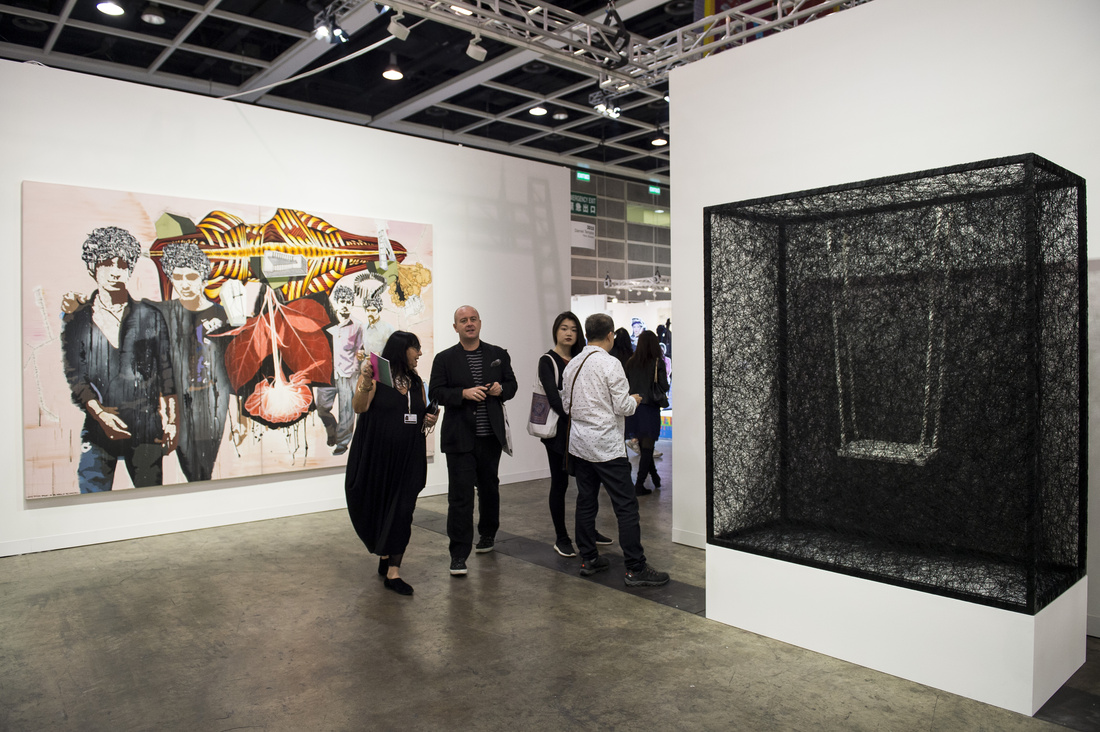 Installation view of Galerie Daniel Templon’s booth at Art Basel in Hong Kong, 2017. Courtesy of Art Basel.
Installation view of Galerie Daniel Templon’s booth at Art Basel in Hong Kong, 2017. Courtesy of Art Basel.
Anne-Claudie Coric, executive director of Paris’s Galerie Daniel Templon, said Art Basel’s strong brand helped draw people to the fair, thereby playing a significant role in promoting that kind of education.
“That’s the role of fairs,” she said, comparing them to the salons of yore. “It’s a place where people meet and talk and educate one another, it’s not only about selling.” Nevertheless, her gallery made brisk sales of works from a range of its artists. Chiharu Shiota’s State of Being (Children’s Dress)(2017) sold for €35,000; pieces from her 2016 “Skin” series of white canvases laced with red thread sold for between €10,000 and €70,000, depending on size. Works by Indian artist Jitish Kallat, such as Wind Study (the hour of the day of the month of the season) 23, (2015), made with burnt adhesive and graphite on Arches paper, sold for between $40,000 and $80,000, while his Instagram-friendly sculpture Syzygy (2017) sold for $75,000.
The increase in regional knowledge and sophistication cited by so many dealers has been matched by a similarly rapid growth in the means to acquire choice works. Asia is producing a new billionaire every three days, according to research cited in The Art Market | 2017, a new report by arts economist Clare McAndrew, jointly commissioned by Art Basel and the financial firm UBS. Asia accounted for 30% of the world’s wealth in 2016, according to the report.
In the short-term, that bodes well for the art market, especially at the high end or in the cases where a limited supply meets inelastic demand (as in the case of coveted but deceased artists). Growing income inequality has been shown to raise prices for artworks as a whole, according to research by Yale University finance professor William N. Goetzmann. A 2010 paper estimated “that a one percentage point increase in the share of total income earned by the top 0.1% triggers an increase in art prices of about 14 percent.” But over a longer time frame, McAndrew wrote in her recent report, “the concentration of values and spending in a narrow segment of the art market puts the market at risk of becoming polarized and creates prices out of tune with fundamental values and the scope” of a wider range of potential buyers.
This region knows a thing or two about inequality. Four out of the top ten most unequal countries are in Asia, according to a 2016 report on global wealth from Credit Suisse (the U.S. is up there too). A Chinese economist has estimated that the top 1% control more than one-fourth of the country’s wealth, an astonishing statistic given the country’s size. Hong Kong’s richest 10% earn 29 times what its poorest 10% earn.
At least some of that enormous wealth is being invested in a vast cultural infrastructure in China, fueled by tax incentives and other special breaks. China’s ambitious drive to build thousands of new museums across the country has been well-documented; a recent post by international cultural consultancy BOP Consulting noted that over one-fifth of those museums are privately funded.
That’s helped create a burgeoning population of collectors whose acquisitions are being made with an eye towards one day belonging in an institution. One dealer joked that “Everybody has a museum here.” Earlier in the day, he’d tried to divert a potential collector away from a work by telling him it was reserved for museums, and the collector promptly informed him he had one too (it was not one that the dealer had heard of).
- Installation view of Hauser & Wirth’s booth at Art Basel in Hong Kong, 2017. Courtesy of Art Basel.
Neil Wenman, senior director at Hauser & Wirth in London, said that institutional focus was encouraging the acquisition of more ambitious work. After years of collecting, he said, Asian buyers have more than filled their multiple homes, and now are looking to be challenged.
“There is a great level of ambition about wanting to collect and wanting to show work in diverse media,” said Wenman. His gallery sold multiple works in the seven-figures, including a 1964 Philip Guston painting, Mark Bradford’s Water in the Ears Puts Guards at the Gate (2017), and a 1982 painting by Frank Auerbach. A Chinese museum acquired a wall-based sculpture by Phyllida Barlow for £150,000.
His colleague Vanessa Guo noted there was a financial interest as well, as the broader Chinese economy was slowing down. Chinese Premier Li Keqiang earlier this month set the country’s growth target at around 6.5%, a modest slowdown from last year’s growth target of 6.5% to 7%. The Organization for Economic Cooperation and Development (OECD) has forecast growth slowing further to 6.3% in 2018.
“Despite the general talk about the economic slowdown in mainland China, I think the interest and passion for collecting Western art is growing,” said Guo, a director for the gallery in New York who focuses on the Asian market. “Maybe people are just realizing that collecting art is a way to diversify their wealth and this is actually a good way to [invest] their money.”
One dealer who lived in China for a decade observed that Chinese collectors are more comfortable than others thinking of art as an asset class (compared with collectors who prefer to think of art purely in spiritual, emotional or aesthetic terms). He noted that as certain sectors of the Chinese economy, such as its ultra-hot real estate market, potentially slow down, additional resources could rotate into the art market. Several gallerists also noted that the Chinese predilection for big discounts made the pace of sales uneven, with many big collectors taking their time and coming around on the last day hoping for greater leverage. They said Chinese clients often asked for discounts of 40% to 60%, higher than the typical 10% or 20% that many dealers offer to regular clients.
But the biggest obstacle to sales may not be the discount-seeking. Beijing’s move to restrict the flow of currency out of mainland China was the talk of Art Basel in Hong Kong. The Chinese government has been attempting to curb a capital flight by imposing measures that would lower the threshold at which banks and financial institutions have to report a transaction. Starting in July 2017, domestic and international cash transactions of more than around $7,200 must be reported (down from around four times that amount), although the $50,000 annual foreign exchange quota would remain in place, according to a Reuters report. The government has also upped enforcement of these regulations.
Dealers were mixed on the impact of those controls, with some suggesting it had accelerated spending on art into 2016, others saying they felt the pinch, and others describing many ways to get around them. For example, a Chinese collector could have a friend in the U.S. or U.K. purchase the work on their behalf and deposit the equivalent amount of yuan into the friend’s Chinese bank account. Alternatively, Chinese with overseas businesses and earnings could simply transact outside the mainland.
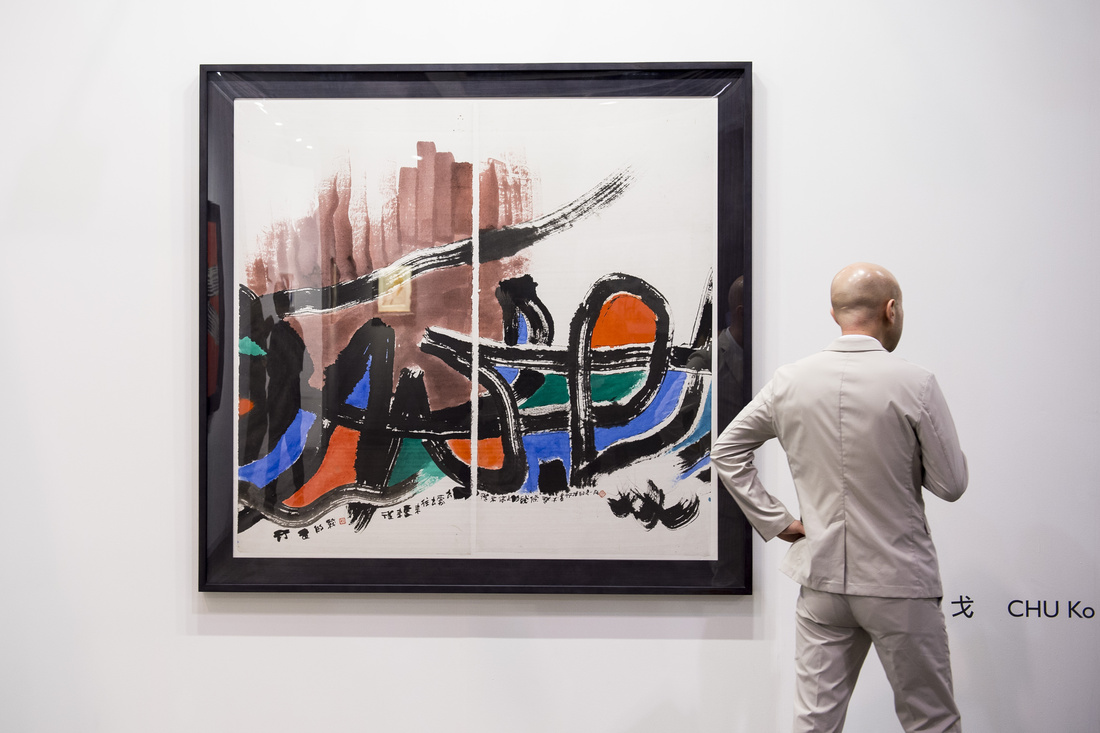 Installation view of Liang’s booth at Art Basel in Hong Kong, 2017. Courtesy of Art Basel.
Installation view of Liang’s booth at Art Basel in Hong Kong, 2017. Courtesy of Art Basel.
One mainland Chinese dealer said the gallery’s clients could pay in installments, but that often proved challenging because such clients typically have other overseas purchases they also have to pay for in the same fashion. Around 40% of dealers surveyed by McAndrew for The Art Market | 2017 said their average payment terms were 60 days or longer. Claudia Chen, co-director of Taiwan’s Liang Gallery, said mainland clients have increasingly asked for their purchases to be taken out of their frames rolled up so they can bring them in a suitcase, rather than transported in easily identifiable boxes, and have also drifted towards smaller, more discreet works. Her booth sold two works at around $32,000 and $48,000 by Chao Chung-hsiang, a Chinese artist who combined traditional ink painting with gestures inspired by Abstract Expressionism. His works were sourced from private collections and from his former art students, specifically to be presented at Art Basel in Hong Kong.
Neil Dundas of South Africa’s Goodman Gallery also cited political tension around the upcoming elections for Hong Kong’s next chief executive, which took place in the Hong Kong Convention and Exhibition Centre on March 26—leaving just hours after the fair closed to tear down booths and make preparations. (Carrie Lam, Beijing’s favorite but hugely unpopular among Hong Kongers, won with 777 of 1,200 votes.) He said one client who typically buys for her home feels “there’s too much questioning on the mainland,” and was holding back on her purchases. Still, after a slow start to the fair he finished strong, selling two editions of Sue Williamson’s montage made from inks on fiber-based paper No Time to Stroll, Hong Kong (2013) for $4,000 each, as well as a large ink painting and a new video work by South African artist William Kentridge.
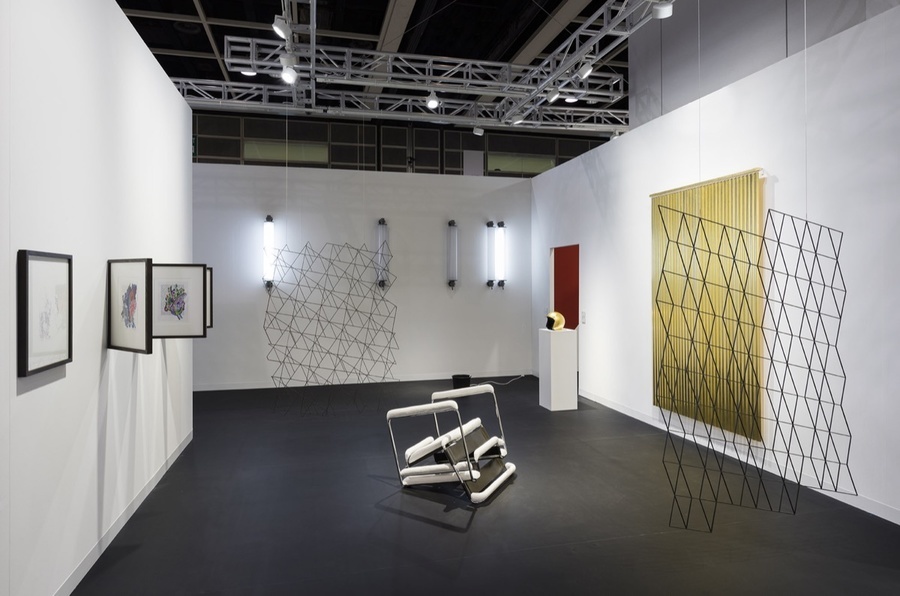 Installation view of Esther Schipper’s booth at Art Basel in Hong Kong, 2017. Photo by Andrea Rossetti, courtesy of Esther Schipper.
Installation view of Esther Schipper’s booth at Art Basel in Hong Kong, 2017. Photo by Andrea Rossetti, courtesy of Esther Schipper.
At David Zwirner, by contrast, Art Basel in Hong Kong started off with a bang, with two $1.5 million paintings by Luc Tuymans, K and D (both 2017), selling within the first hour. Several more works sold in the low- to mid- six figure range, including Neo Rauch’s oil on paper work Stillstand(2014) for €440,000, and one of Yayoi Kusama’s acrylic paintings from the artist’s “Infinity Nets” series (2016) for $450,000. All of the gallery’s sales were to private collectors.
The Berlin-based Esther Schipper gallery placed Philippe Parreno’s 56 Flickering Lights (2013), a work which premiered at the artist’s Palais de Tokyo survey in 2014 and was later shown at the 2015 Venice Biennale, with a South Korean institution. The gallery also sold all three of Tomás Saraceno’s “Cloud” sculptures they brought to the fair, and one work by Pierre Huyghe, Timekeeper (Drill Core), Palais de Tokyo (2016), a chunk of the wall of the Palais de Tokyo sanded down by the artist to reveal the layers of paint that have backgrounded the institution’s shows.
Frederik Schampers of Galeria Nara Roesler, which has outposts in Rio de Janeiro, São Paulo, and New York, credited the dozen or so high-profile Western galleries that have opened in Hong Kong and elsewhere in Asia with spreading awareness of major international artists. He sold four works by Vik Muniz, ranging from $17,000 to $18,000, and two by Xavier Veilhan, including a wood and plywood sculpture Tony (2015) for €35,000.00.
The other group that seemed to be on a learning curve was the dealers themselves, who have updated their offerings to cater to the more sophisticated Asian buyer. José Castañal, a director at Galerie Thaddaeus Ropac agreed; he said dealers have realized it is no longer sufficient to bring things that were “red and shiny,” because Chinese collectors travel to fairs and see the quality on offer overseas. “They see what you bring to Basel and they say, ‘Come on.’” His gallery sold a Tony Cragg sculpture for €650,000, a Georg Baselitz painting for €360,000, a work by David Salle for $300,000, and a work by Gilbert & George for £125,000.
- Installation view of Galerie Thaddaeus Ropac’s booth at Art Basel in Hong Kong, 2017. Courtesy of Art Basel.
Mathias Rastorfer, partner at the Switzerland-based Galerie Gmurzynskawho is on the committee for the Modern section of Art Basel in Hong Kong, said in the beginning galleries brought Andy Warhol’s Mao portraits, which is like “bringing falcon sculptures to Saudi Arabia,” he said. “This kind of colonial spirit was misplaced.” He brought several early wrapped sculpture works from Christo as part of the debut of the Kabinett section in Hong Kong, a number of delightful paintings by Fernando Botero, and a selection from Cuban artist of Chinese descent Wifredo Lam, subject of a recent retrospective at the Tate Modern in London. One work by Lam sold for about $1.5 million, as well as others by Lam in the low six-figure range, and a Botero for $600,000.
Leo Xu, who worked at James Cohan Gallery before starting his own contemporary-focused gallery in Shanghai, said that local galleries were learning too. The growing number of international galleries opening across Asia has challenged them to become more professional and operate at a higher level.
Martin Aguilera of the Brazil-, New York-, and, soon, Brussels-based gallery Mendes Wood DM said ultimately the learning goes both ways. He noted co-founding director Matthew Wood took the time to learn Mandarin, and the gallery takes care to serve the interests of the larger art community as well as their own, by, for example, recommending other galleries to collectors based on their tastes. He thinks that exchange has earned them the trust of Asian collectors, who flocked to works by Brazilian artist Solange Pessoa; all 10 editions of her untitled bronze work from 2000 sold for $10,000 each, as well as three oil on canvas paintings sold for $20,000 each. An Asian institution also snapped up a series of six soapstone sculptures by the artist.
“The Chinese are much more knowledgeable about our program than I would say a good amount of the U.S.,” he said, which means that inventory that used to be held for Art Basel’s Basel or Miami Beach fairs is now coming instead to Hong Kong. “We saved a lot of our best stuff for this fair.”
—Anna Louie Sussman

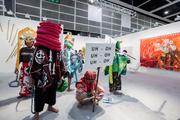
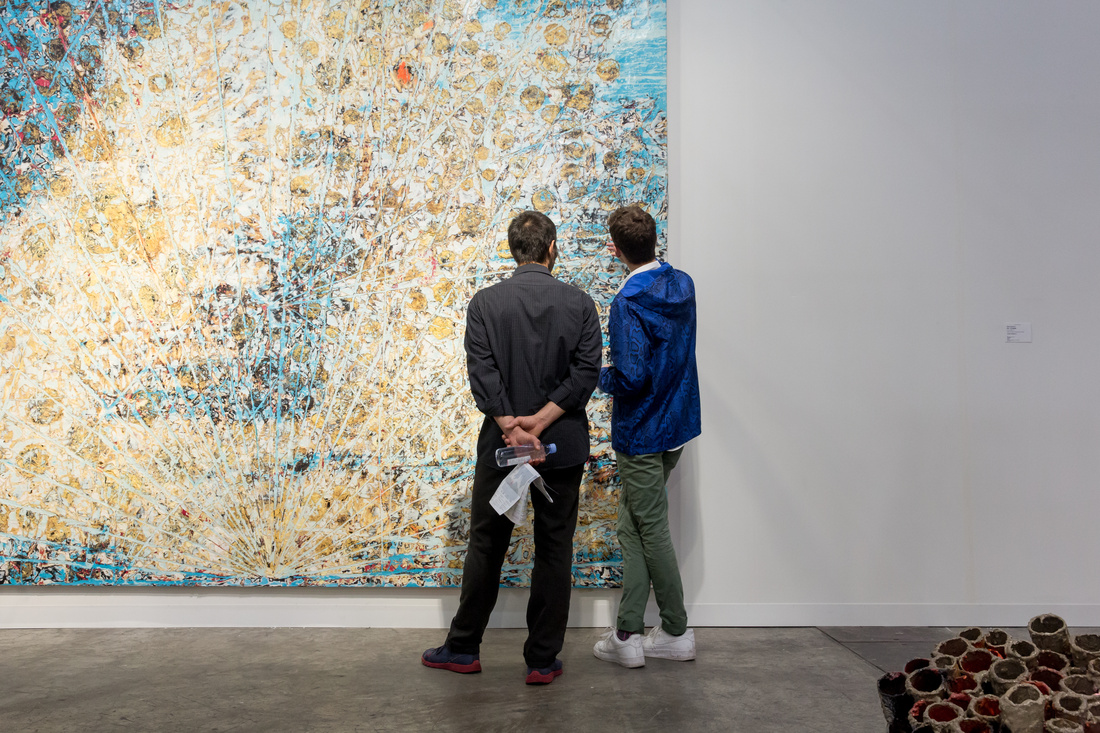
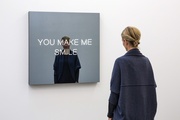

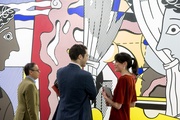

No comments:
Post a Comment